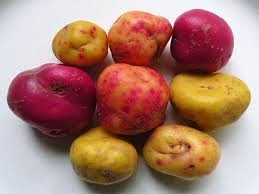The Chavin culture was pre-Inca civilization that developed during the Early Horizon and had its center Chavin development that is located between the rivers Mosna and Huachecsa , in the present department of Ancash in Peru.
Traditionally , the historical development of Chavín is considered a " cultural horizon " due to its artistic and religious influences present in other contemporary cultures it. Much of this historical development specifically corresponds to the Formative Period and the Middle Formative Formative whose characteristics intensification of religious worship , the appearance of pottery closely related to the ceremonial centers , intensification of maize and potatoes, the improvement of agricultural techniques and the development of metallurgy and textiles .
It was the archaeologist Julio C. Tello (known as the "Father of Peruvian Archaeology ") who discovered and considered as the " parent culture " or "mother of the Andean civilizations " , however recent discoveries suggest that the Late Archaic Caral is Chavin oldest nevertheless is still a reference in general works .
Geographic Location
The Chavin culture had its core development in the province of Huari (Ancash), covering various ecological, in the lagoon view Paron in the natural region of Janca.
The ceremonial center of Chavin culture, Chavin, is located in Conchucos on the eastern side of the Cordillera Blanca, at the confluence of the rivers Mosna and Huachecsa, Marañon River tributaries, in the present district of Chavin of Huántar, 6 in the province of Huari, Ancash region. Its coordinates 9 ° 35 '33.99 "S, 77 ° 10' 42.43" W and a height of 3150 meters.
The Chavin people spread across much of the Andean region spanning north to the current Peruvian departments of Lambayeque and Cajamarca and south to the current Peruvian departments of Ica and Ayacucho, so it is considered a pan-Andean culture
Agriculture
The cultured Chavines various products including different varieties of potatoes.Cultivating agriculture developed various products which include corn and potatoes, other agricultural products were:
Tubers: Olluco, Mashua, Oca, Sweet Potato
Legumes: Pallares, Beans
Oilseeds: Groundnut
Condiments: Peppers, Achote
Grains: Quinoa, Kaniwa
Fruit: Tomato, Cucumber, Avocado
Among agricultural techniques is the use of the channels, and also began the construction of the first platform and the use of chaquitaclla (foot plow), which increased agricultural productivity.
Animal Husbandry
The flame was the main representative of the livestock Chavin.
Developed based livestock South American camelids (llamas and alpacas) and guinea pig breeding.
Goldsmith
Gold ornament found in Chongoyape Cupisnique belonging to tradition.Modeled by hammering and embossing, preparing diadems, bracelets, earrings, earrings, beads and small ornaments. Some samples of these works were found in Chongoyape Kuntur. The high grade gold suggests that came from Amazonian rivers washes.
Textileria
Using as raw material cotton and wool, carpets and fabrics were made. These could be simple, embroidery and fringes based embellishments and fringes. On the coast, according to Julio C. Tello "are vestiges of spinning and textiles, as piruros spindle and fragments of wool and cotton. Below are primitive technique based mesh network, chiffon, beaded, knotted, twisted, draft, etc.Ceramics
Chavin pottery has a globular shape and flat base stirrup as shown in Fig.
The pottery was extraordinary. It is usually monochrome, sometimes is decorated with red and black-silver. It adds a number of scores. Among the beings represented include: zoomorphic creatures (cats, monkeys, lizards, snakes and birds), fitomorfos (tubers) and anthropomorphic. The colors used were: gray, brown and black
Chavin sculpture
Its main features is that they were made of stone (lithic art) with religious emphasis. The most important sculptures are the monoliths, the stelae and gargoyle heads
Lanzón monolithic
The monolithic sandeel (depicting a fierce-faced god or as John Rowe to 'Smiling God') is a sculpture of 5 m in height which is stuck in the middle of a small square-shaped space within a cruise that is underground, in the central part of the Old Temple of the archaeological complex of Chavin. It was christened the "Lanzón" in form of gigantic projectile point, although this name is misleading, because in reality it is a Huanca (Wanka Quechua) or sacred stone, of paramount importance in religious worshipEstela Raimondi
Raimondi Stela (which represents a god with two walking sticks in hand) is a polished granite monolith of 1.98 m square by 0.74 m wide, carved on one side only. It depicts a god felínicos traits with arms outstretched holding in each hand a stick or staff. Similar representation also appears in other sculptures of later Andean cultures, such as Tiahuanaco and Huari, which is known as Viracocha or the "Divinity of the two Staffs".This monolith is named as a tribute to Italian naturalist Antonio Raimondi who promoted his transfer to Lima to study and conservation (1874). It was exhibited in the old Exposition ParkReligion
Detail of the face of the god represented in monolithic Lanzón.The Chavin people was apparently polytheistic and worshiped gods terrifying. According to Tello, Chavin religion Amazon would have had influence, as his sculptures show supernatural beings with felínicos features as the jaguar and puma, alligators, snakes and birds such as the Andean condor and the hawk, or Amazon as the harpy eagle. The Chavin cult was stimulated by technical progress achieved in agricultural production in the textile development in the fishery (use large fishing nets) in the gold and copper metallurgy. These technical advances boosted economic development and led to the construction of many ceremonial centers.











OK. RECEIVED!
ResponderEliminar